 I was born in 1974 with Russell Silver Syndrome and a severe cleft palate in the Northern General Hospital, Sheffield. I thought I would write this to help show the positive and the negative experiences I have had living with RSS.
I was born in 1974 with Russell Silver Syndrome and a severe cleft palate in the Northern General Hospital, Sheffield. I thought I would write this to help show the positive and the negative experiences I have had living with RSS.
For a while, I was unwell with illnesses like pneumonia, bronchitis, etc. In the early years I had 6 semi-successful operations to repair my palate. Although I still have a speech impediment, this is just part of what makes me unique. This period in my Mum and Dad’s life must have been very frightening; I don’t think I can really comprehend their turmoil and distress. I had a growth hormone test at 2 years old and it was established that I was producing growth hormone and having GH treatment would not work.
At the age of 3, my Mum and Dad were advised by a paediatrician to send me to pre-school early, as he felt that good social skills were very important. This was, and I believe still is, the best professional advice ever given to my parents. He obviously knew the importance of having a high ‘Social Value’ and being happy around people.
In these early years at school, I had a welfare assistant called Mrs. Stocks, who made sure I was able to manage. I remember she made me a set of fold-away steps on wheels so that I could reach the top shelf in the library. I made some good friends who saw it their responsibility to look after me and gradually I needed Mrs. Stocks less and less. My friends used to help me carry the crate of milk in at break time when the other children could carry it by themselves, but I believe it gave them a sense of worth. Bullying was never an issue because of this supportive network of friends.
In 1983, we moved down South for a work opportunity that my Dad had. We lived in Surrey for one year where I attended a mainstream junior school, unaided.
In 1984, we moved again to Tunbridge Wells. Here, the LEA did not feel that I would cope in the mainstream education system and although my parents tried to put me into the local junior school, the LEA (without meeting me in person) placed me in a special needs school that catered for ‘weak’ children, who for some reason, had fallen back in their education. I remember being told by the Headmaster that I would be a high flyer for a while until the other pupils caught up. Initially, it was a school that catered for children who had missed some of their education due to ill health, and then it extended its remit to children with learning and behavioural issues. After 5 years at Spring Gardens, I had fallen back from the mainstream system and was unable to return to it.
My brother had always been into sports and he had started taking me everywhere with him. This was our schedule; Monday evening was Cricket nets, Tuesday was Tennis, Wednesday was Table Tennis, Thursday Tennis again, Friday the local YMCA. Saturday was the Roller Disco, and Sunday I used to watch him play in street hockey matches on roller skates or cricket, which I occasionally joined in with. Although he was 4 years older and of average height, I always used to try to compete with him. I learnt to be happy if I performed well and made him worry that I might actually win. I began to learn that a perfect technique, agility and speed were my tools for trying to beat strength and power. In Table Tennis I used my lack of height by allowing the ball to come down to me below the height of the table and below the sight line of my opponent. I would then put a spin on the ball, so when it bounced it would change direction, go faster or slow down. These were major life lessons for me, I had to do things differently to compete and win against other people of my own age and average height. Nature will always compensate. If you lack height, strength and power, you gain speed, agility and accuracy. This is the same for life skills. Someone dyslexic can be very visual and creative; someone with autism can sometimes have great mathematical abilities. I think it is another attribute for RSS children and adults to be sociable and friendly, this is projected as a natural confidence, which should be encouraged.
It was around this time when I had an epiphany. I went on holiday with Mum, Dad and brother to Butlins. They had a sports program for children, where you could do activities to win Bronze, Silver and Gold awards. In our first week, my brother and I took part in the bronze award and successfully completed the goals set. In the second week, my brother continued onto the Silver award. Obviously I wanted to emulate him and do this too. My Mum and Dad were concerned that it might be too much for me; they thought I may not be able to achieve the award, feel like I had failed and be hurt. After a few arguments and tantrums, they relented. I took part in the award scheme and gained the silver award with my brother, but I also won a trophy for the most improved participant of the week. This was the epiphany; I realised that it was up to me to push myself and find my own limits, which is obviously the best motivation and mindset anyone can have.
One morning in late 1985, my blood sugar level dropped dangerously low and I spent a week in hospital having tests. After this, my Mum became very anxious about me having another hypoglycaemic attack, and insisted that I carry glucose tablets everywhere and a couple of chocolate bars. For many years after this attack, I would sometimes feel funny and light-headed. I now think that some of these latter moments were mild panic attacks, because it would happen if I thought about overwhelming stuff like the size of the universe or if I was standing alone in the middle of a field.
I remember my Nan once saying that “You will be a millionaire by the time you’re 35”. People could see my drive. But then she would also ask my Mum if I wanted a cup of tea, and who would reply, “try asking him”.
As I became more fashion conscious and established my own identity, I found it frustrating that I was unable to find small fashionable clothes without some silly motif. So in my Home Economics class at school, which was also the life skills class, I decided to make my own. At this point I aspired, one day to create my own label for young or petite people.
In 1989 at the age of 14, one of my teachers suggested to my Mum and Dad that they went to visit a school called Valance in Westerham, Kent. This was a school that catered for physically disabled children, somewhere that I could try and aim to do GCSEs by the age of 18. In this school, there were different teachers for each subject. One of my first classes was a design lesson, where we had to draw a pencil and then design a personal logo using a technical drawing board. I loved this, it was easy and it felt like such a professional thing to do. I understood immediately about plans and elevations and reading architectural drawings. I could just do it.
At 15, things were really starting to happen for me; I ran a 10km cross-country race, I got my first Saturday job in a local food store and I learnt how to ski on a school trip to France. I decided to set myself a goal to achieve at least one thing every year from now on.
At 16, I started doing Karate, this was an activity that my brother didn’t do. He was now taking part in pentathlons, these were not for me. I would not be good at high jump! I know my limits! Karate is something that promotes everything that I had started to stand for. ‘You get out what you put in’.
At this point, I was asked by my paediatrician if I wanted to try GH treatment so I would reach 5′ 3”, I remember he suggested that if I didn’t reach this magical height then I might always be working in a supermarket type job and it would be difficult to get a girlfriend. I tried GH for one year and there was no significant impact from the treatment, I am now 4’10”. Although it probably did help my karate and gym training. Those comments at age 15 have resonated with me ever since, I hope doctors have learnt to be more careful about how they word things. I was also asked if I wanted another operation on my palate, which after much consideration I refused.
At 17, I learnt to drive and passed my test on the first attempt. I bought my first car from my Saturday and holiday earnings.
At 18, I was made redundant from my Saturday job because the shop was going out of business, (it wasn’t my fault..! Honest…!) So I applied for a Saturday/holiday job at Tescos. Since I had not been given the opportunity to meet the LEA people when we moved to Kent, I relished the opportunity of interviews. I knew that I could win peoples affections and impress them within a half hour interview. I always felt that the less they initially expected when I entered the room the more they would be impressed when I left the room.
I applied for a Foundation course at Art college, although for entry I required one A level and three GCSE’s over grade C, one of which had to be Art related and I only had one of those requirements. I went into the interview with an art portfolio and two design projects, one where I had re-designed my bedroom with a mezzanine level into the attic, which I had done for my design GCSE. The other was a kettle tipper so a disabled person could make a cup of tea. I had a few friends who had never made a cup of tea in their lives because of their disability, but they managed to with my prototype made out of Meccano. After 10 minutes of the tutor looking at my art portfolio this was the conversation:
Tutor: “Your art work is not very good and you don’t have the qualifications for the course, so why are you here?”
Me: Pointing to my design projects I said. “Well I have good ideas and lateral thinking skills but because I have communication problems with my speech impediment, I need a medium to communicate my ideas, and I think art is the way”.
Tutor: He smiled and said to the other interviewer, “I think we can fit him in somewhere as a bit of a wild card, can’t we?”
At the end of this one year course, for my final project, I designed a new theoretical subterranean exhibition wing to the college and I got a Merit grade for the course. I then progressed onto a 2 year HND 3D design course at the same college.
By the end of 1994 at age 20, without having failed any gradings and in the minimum time, I achieved my Black Belt in Karate. I was also going to the gym everyday in my lunch hour and in total doing about 15 to 20 hours a week of exercise.
In 1996, I was coming to the end of my HND and needed to apply for a university course, one of my tutors said that because I was making a lot of models of my ideas, she thought that a model design course would be a good option. So I applied to go to the University of Hertfordshire. I gained an interview. Shortly after I left home, driving to my interview, I started to cry and had to pull over. I realised and already knew that I had made it, whatever happened from here on in I was going to be successful. I was given an unconditional offer at the interview, without waiting for my results from the HND, although, I did get a distinction for my HND course.
Like many people going away to Uni, I found this very difficult at first and being away from home meant I really had to get out and socialise. Since leaving school, I still felt like I had missed the whole cultural trip through not having a mainstream education. Education is not just about academia (although my essays were not that brilliant either), I felt that I had missed educated social interaction and learning about educated humour. I soon made some good friends, studied hard, and worked hard (part-time at Asda) and partied harder for 3 years.
In 1997, at the end of my first year, I got a paid work experience – prop making on the film set of ‘Saving Private Ryan’ for which I cancelled a lad’s holiday…! But I felt I could not miss the opportunity. In my 2nd year I did work experience at a visual effects company called Artem, making a model for an animation.
In 1999, I graduated with a 2:1 BA (Hons) Degree and for one year I worked as a freelance architectural model maker. Bit Boring!
In December 2000, I had an interview for a model making position in the miniatures department on a new film called ‘Harry Potter’. When I first walked into the workshop with the model unit supervisor, I noticed the first impression of the workshop manager. His face said, “What will this little guy be able to do in helping to build a 30 foot model?” and when I started to talk to him he panicked because he could not understand me, because of my speech impediment. Luckily, I knew some guys that I had worked with before from my work experience at Artem, and was put to work with them. I knew that with the initial low expectations of the workshop manager I was going to do well. At the end of the first day, he came up to me and said he was very impressed and had not expected me to do such a good job! At the work Christmas party it was suggested to me that because I was quite small, I might be able to fit inside the Hogwarts model and install the fibre optic lighting for all the flamboux and window interiors. So when we returned in the New Year I was given this job within a team of 5 other special effects technicians.
In 2002, on the next Potter instalment, I was called back but there were just 2 of us installing the fibre optics. Now I wanted to start finding my way back to the design department, and get back to the drawing board. Also, miniature model making was a dying art and was starting to be taken over by the computer generated stuff. So I enrolled on a one month Art Direction course at Pinewood Studios, where I started to learn draughting for film set design. I impressed the founder and mentor of the course, and he let me spend time there practising my draughting between model making jobs.
In 2003, on the third Harry Potter, it was just me installing the fibre optics, and at the same time I was doing the same thing on a model for Charlie and the Chocolate Factory.
I had created a niche market from my size and personality. I have subsequently worked on all the Harry Potter movies, the Wizarding World at Universal Studios in the USA and other films like Stardust, Pirates of the Caribbean etc. I now work on the drawing board and computer, as a design draughtsman, drawing sets, props and vehicles.
I had always been a very anxious person, but in 2010, I realised that my anxiety was out of hand. I was having panic attacks, worrying about my health and worrying about being single. I went to see my doctor to get help and she suggested some CBT (Cognitive Behaviour Therapy). With the therapist, I broke everything down. I learned that everything that I did was an attempt to prove to people that there was more to me than what I felt they saw on the outside. So although I had always felt I had a lot of self belief, I was continually trying to communicate this to everyone, in a perpetual interview. I had been putting loads of pressure on myself, with work, girls, friends and family. It wasn’t until March 2011 that this knowledge would filter through and I would understand and my most recent revelation and epiphany would dawn on me.
In September 2010, I joined the TARSS Facebook group. I was reading all the posts by other members and realised how alike the experiences of other RSS people were to my own. On 23rd September I noticed another member from Ukraine who was into rock climbing, skiing and fashion design, whose life experiences seemed to be similar to my own and she had such a positive outlook. I knew that I had to meet this person, so sent a friend request. We got to know each other through FB. I suggested that we met up and go skiing, and she said OK. At this point I still had some fears, I was frightened of flying, didn’t like being on my own for long periods of time and I had a fear of injections (some vaccinations are recommended for Ukraine). I knew that I could use my CBT techniques to overcome these, so I enrolled on BA Flying with Confidence course, which worked and I was comfortable to fly alone. I then went to the doctors to have all the vaccinations recommended (some of which were in 2 stages), even though I felt they weren’t all necessary, I wanted to work through my phobias. The trip also required me to travel alone on an overnight train across Ukraine and the whole journey would take 24 hours. In January I did this, I was very, very nervous all the way there. I met up with her and we had a brilliant time.
On my return I realised that I had achieved so much and that I had always been too pre-occupied with my worries and trying to show ability and value, that I had actually been devaluing who I am to myself. I am not the boy who the LEA would not allow into mainstream schooling or the person that was told what might happen if I didn’t have GH treatment and reach 5’3”.
I have achieved so much because of my desire to aspire. Now I am just proud of whom I have become and hope that this inspires other RSS young people to assume high values, success and happiness.
On 24th June 2012, I successfully completed the Henley-on-Thames Triathlon, in aid of the CGF. I would like to thank everyone who sponsored and supported me.

 Problems in the pregnancy began at 17 weeks, following an amniocentesis test. The amniocentesis didn’t go according to plan and a couple of hours later I was back in hospital, because it seemed that the membranes had ruptured. The doctors were very pessimistic and I was put on bed rest for a few days and monitored closely. Following numerous checks and scans I was discharged from hospital after two weeks and told to take it easy for the rest of the pregnancy.
Problems in the pregnancy began at 17 weeks, following an amniocentesis test. The amniocentesis didn’t go according to plan and a couple of hours later I was back in hospital, because it seemed that the membranes had ruptured. The doctors were very pessimistic and I was put on bed rest for a few days and monitored closely. Following numerous checks and scans I was discharged from hospital after two weeks and told to take it easy for the rest of the pregnancy. I was born in 1974 with Russell Silver Syndrome and a severe cleft palate in the Northern General Hospital, Sheffield. I thought I would write this to help show the positive and the negative experiences I have had living with RSS.
I was born in 1974 with Russell Silver Syndrome and a severe cleft palate in the Northern General Hospital, Sheffield. I thought I would write this to help show the positive and the negative experiences I have had living with RSS.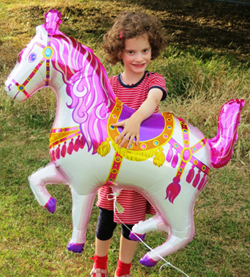 Parents: Sophie and David
Parents: Sophie and David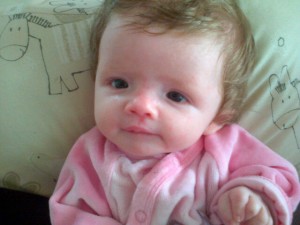
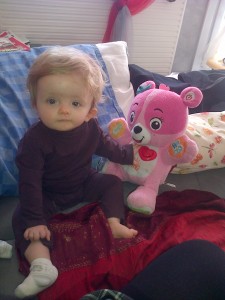 However my husband and the AFFIF association were here for me to help on a daily basis.
However my husband and the AFFIF association were here for me to help on a daily basis.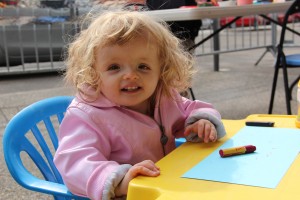
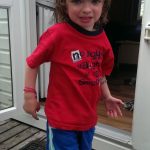 Frankie is our 3rd boy, his siblings William and Patrick were full term and perfectly healthy babies but whilst pregnant I always felt that Frankie was a small baby. Our Obstetrician was closely monitoring pregnancy-growth and we were all set for a planned C section in January 2010 but the obstetrician advised that we may be having a 2009 baby if the baby still remained small. Other than the baby size, the pregnancy was straightforward enough however at 34 weeks my waters just broke. In hospital I was given steroid injections to help the baby’s lungs develop and 4 days later Frankie was delivered by C Section weighing just 3lbs and 6oz.
Frankie is our 3rd boy, his siblings William and Patrick were full term and perfectly healthy babies but whilst pregnant I always felt that Frankie was a small baby. Our Obstetrician was closely monitoring pregnancy-growth and we were all set for a planned C section in January 2010 but the obstetrician advised that we may be having a 2009 baby if the baby still remained small. Other than the baby size, the pregnancy was straightforward enough however at 34 weeks my waters just broke. In hospital I was given steroid injections to help the baby’s lungs develop and 4 days later Frankie was delivered by C Section weighing just 3lbs and 6oz.